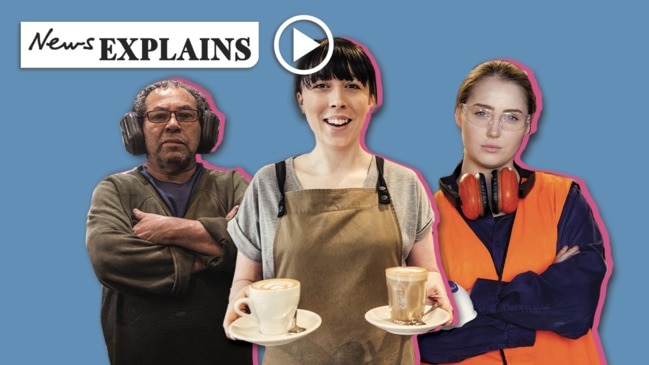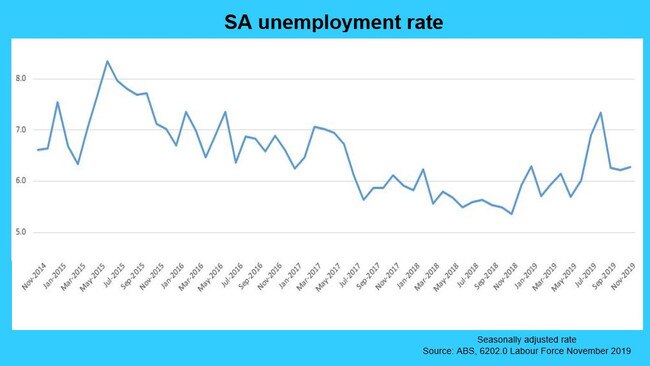SA unemployment rate rises but more find jobs
Women joining the workforce have driven up the number of South Australians with a job – but ongoing tough conditions have pushed the unemployment rate slightly higher.

SA News
Don't miss out on the headlines from SA News. Followed categories will be added to My News.
- Wages for full-time SA workers fall to lowest in Australia
- How to get the most out of your Advertiser digital subscription
The unemployment rate in South Australia worsened slightly in November to 6.3 per cent, the Australian Bureau of Statistics reported today.
The result was up from the 6.2 per cent recorded in October but remained well below this year’s peak of 7.3 per cent, seasonally adjusted in August.
Some 2600 more people had a job in SA in November than October.
The increase was driven by women finding work, in contrast to men whose overall job numbers fell.

SA’s participation rate rose, with a similar pattern of men dropping out of the workforce while women joined in.
Innovation and Skills Minister David Pisoni welcomed the increase in the number of people with a job but acknowledged “there is much more work to be done”.
“We are driving positive jobs growth today through lowering costs for businesses in SA – including the abolition of payroll tax for all small businesses and by reducing the top land tax rate from a national high 3.7 per cent to just 2.4 per cent,” he said.

Mr Pisoni also highlighted data from the SEEK employment service which showed a lift in salaries in SA for skilled workers.
“SEEK also noted the industries recording strong jobs growth in SA were design and architecture, consulting and strategy, science and technology, insurance and superannuation, and education and training,” he said.
“This illustrates the importance of new and emerging industries and the transition that the South Australian economy is undergoing while delivering more jobs and new career pathways.”
SA’s workforce now comprises 907,400 people – of whom 850,400 have a job and 57,000 are looking for work.

Nationally the unemployment rate fell to 5.2 per cent, seasonally adjusted, down 0.1 percentage points with nearly 40,000 more people finding jobs.
SA had the equal worst unemployment rate in the nation, along with Queensland where the rate decreased at the same time as SA’s rate increase.
Victoria had the lowest unemployment rate.
Opposition treasury spokesman Stephen Mullighan said the government needed to stop increasing taxes and should bring forward infrastructure spending to support jobs.
“It’s incredibly disappointing that we have the nation’s highest unemployment rate,” he said.
“There are nearly 10,000 more unemployed South Australians now than there were at this time last year.”
Mr Mullighan said the changes in the participation rate of men and women showed that struggling households needed two incomes while men in traditional industries were finding it hard to hold onto jobs.
In trend terms, SA’s unemployment rate was steady at 6.3 per cent and remained a skerrick better off than Queensland, which was steady on 6.4 per cent.
The SA economy has been in the slow lane for growth, with the joint second weakest increase among the states at 1.4 per cent in 2018-19.
With uncertainty plaguing global trade and extended national drought, business confidence has been low, according to Business SA’s regular survey.
Confidence has been hit in SA by the long-running land tax debate but that has now been resolved.
